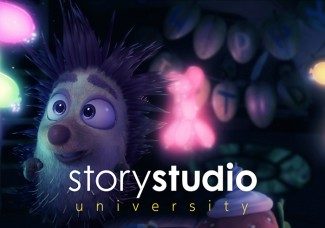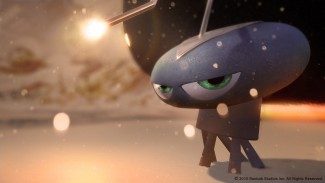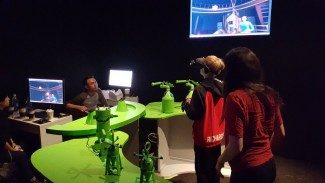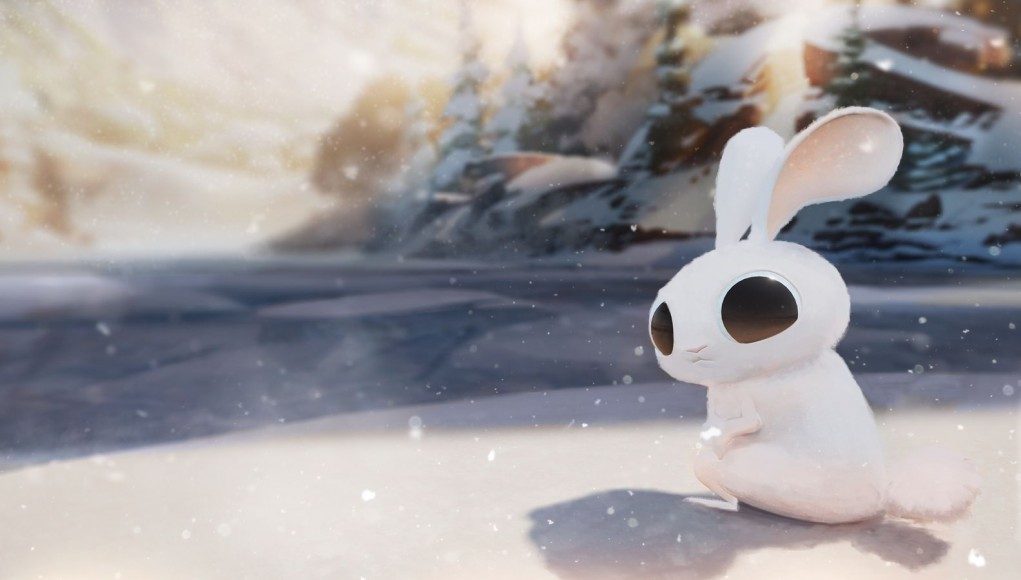 Eric Darnell got into animation in the 1980s and eventually landed at Dreamworks Animation where he co-directed Antz (1998), and then co-directed and co-wrote four Madagascar movies. He’s a storyteller at heart, and now he’s diving deep into writing and creating short VR animated experiences in a start-up venture that he co-founded with Maureen Fan called Baobab Studios. I had a chance to catch up with Eric at Sundance to talk about his process of crafting a story, and why he’s so excited about the narrative potential of the medium of virtual reality.
Eric Darnell got into animation in the 1980s and eventually landed at Dreamworks Animation where he co-directed Antz (1998), and then co-directed and co-wrote four Madagascar movies. He’s a storyteller at heart, and now he’s diving deep into writing and creating short VR animated experiences in a start-up venture that he co-founded with Maureen Fan called Baobab Studios. I had a chance to catch up with Eric at Sundance to talk about his process of crafting a story, and why he’s so excited about the narrative potential of the medium of virtual reality.
LISTEN TO THE VOICES OF VR PODCAST
Audio PlayerIn a recent promo video shot by Oculus to promote VR film, Eric had powerful words to say about virtual reality’s potential. “It is going to be the dominate artform of the 21st century, I am completely convinced.”
Eric reiterates a commonly heard mantra at this point in the development of VR: VR is the wild west and no one really knows what’s going to work and not work yet, but his ultimate goal would be to create a VR experience where you’re completely engaged and emotionally invested within the story of the main character. He recognizes that there will be interactive components within VR, but he’s cautious about how interactivity will impact how much you can empathize with characters within the story.

For example, if you have to make a choice in an experience as to how to console a character who’s in pain, then does it turn into more of a video game experience where your intention is to achieve a specific goal? Can you still completely witness the character without your ego getting worried about whether or not you’re taking the right course of action?
There could in fact be a tradeoff with how much interactivity that you have with a story and your capacity to empathize with specific elements of the story. This seems to be an open question at the moment, and an element of empathy in VR that I hadn’t fully considered. Eric is really interested in exploring empathy in VR not from a documentary perspective, but more from within the context of traditional 3-act or 5-act story structure. He suspects that a more passive experience of watching someone’s story unfold is more likely to cultivate empathy than if you’re somehow dynamically interactive with that character within their story.
Initially, Baobab Studios will be producing a series of short films to be able to explore the language of VR and start to get their production pipeline ironed out. At the moment, Eric is relying upon detailed descriptions that he’s writing within his scripts, but VR may be a medium that requires more iterations with immersive storyboards or new ways to choreograph the action within a 360-degree landscape.

Eric suggests that perhaps there’s a lot to learn about this process by going back to see how Disney character animators used to operate; they would have the freedom orchestrate a character’s arc through a number of story beats and then they would pass this along to the environmental artists who would construct the scenes from this starting point. For now, the short VR experiences from Baobab Studios are small enough that they can just dive in and start creating them, but they will be learning how to more efficiently create a collaborative process for constructing stories within VR.
Eric feels that there’s still a lot to be learned about constructing and telling stories in VR, and this has been inspiring him to write a flurry of different scripts. These different ideas span many different genres and types of human experiences that are inspired by a range of observations in nature to traditional folklore and fairy tales. The possibilities for what can be done in VR is so wide open that Eric is casting a wide net, and looking forward to doing more rapid iterations across these many genres to start to find those universal components of the language of telling stories in VR.
After I stopped recording, Eric made a very important distinction about the differences between the mediums of film and virtual reality. He said that film is a medium where someone can share the story of an experience, whereas virtual reality is a medium where you can give someone an experience which they can generate their own stories from.

This is one of the most insightful takeaways that I got from going to the Sundance Film Festival this year, and it helps focus the challenge of how to give someone an experience that is uniquely their own, but yet still use the power of the medium to construct and tell the story that you want to tell.
There will be a range of different levels of interactivity, whether that’s local agency that flavors your personal experience or maybe global agency to determine the overall outcome of the story. For Eric and Baobab Studios, they’re going to be focusing primarily on telling stories that can wash over you and really sink in. They’re not as interested in creating highly interactive stories where your actions change the outcome of their story, but they’re looking into how to create a sense of presence by embodying a character in a scene where you may have a little bit of interaction and small ways of flavoring your personal experience.
Eric sees that the ultimate potential of storytelling in VR is that we’ll be able to live out the stories that we could previously only read, listen to or watch. Technology is progressing a lot faster than many of us realize, and he does believe that we’ll at some point have our own holodeck-like technologies where we won’t be able to really distinguish between reality and virtual reality. And perhaps it’ll be so convincing that we’ll never really want to come out. One thing that is for sure is that we’ll be using the technology to tell stories, and that Eric will be continuing to explore the frontiers of storytelling in VR that provides people with rich experiences that are emotionally moving.
Become a Patron! Support The Voices of VR Podcast Patreon
Theme music: “Fatality” by Tigoolio







